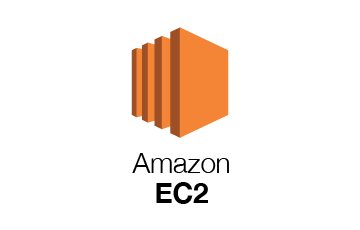In the rapidly evolving world of software development, deployment strategies play a critical role in ensuring high availability, reliability, and seamless user experiences. One of the most effective and increasingly popular methods is the Blue-Green Deployment Strategy.
In this article, we’ll dive deep into what Blue-Green Deployment is, how it works, its benefits and challenges, and how you can implement it in your DevOps pipeline using tools like AWS, Kubernetes, and Jenkins. Whether you’re a developer, DevOps engineer, or site reliability engineer, this guide will give you actionable insights to implement blue-green deployments effectively.
What is Blue-Green Deployment?
Blue-Green Deployment is a software release strategy that reduces downtime and risk by running two identical production environments, called Blue and Green. Only one of the environments is live at a time and handles all production traffic.
- The Blue environment represents the current live version.
- The Green environment is the new version that is ready to go live.
Once the new version is tested in the Green environment, traffic is switched from Blue to Green. If something goes wrong, it’s easy to roll back by directing traffic back to Blue.
Why Blue-Green Deployment Matters
Traditional deployment processes often involve:
- Service interruptions
- Risk of introducing bugs
- Downtime during updates
Blue-Green Deployment solves these problems by ensuring zero downtime and easy rollback, which is vital for modern, customer-facing applications.
Benefits of Blue-Green Deployment
Here’s why teams adopt this strategy:
1. Zero Downtime
Switching environments can be instantaneous, ensuring continuous availability.
2. Easy Rollback
If the Green environment fails, you can instantly revert to the Blue environment.
3. Safe Testing in Production-like Environment
You can test the new release in an environment identical to production without affecting users.
4. Enhanced User Experience
End-users remain unaffected during the deployment.
5. Risk Mitigation
Issues can be detected and resolved without impacting the live environment.
Challenges in Blue-Green Deployment
1. Infrastructure Cost
Maintaining two environments doubles infrastructure cost.
2. Stateful Applications
Handling database migrations and stateful components can be complex.
3. Traffic Management
You need a robust traffic router/load balancer to handle switchovers effectively.
Follow me in Linkedin. Click here
When Should You Use Blue-Green Deployment?
- High-availability applications
- Frequent production releases
- Applications with minimal state or stateless microservices
- Production environments where downtime is unacceptable
How Blue-Green Deployment Works: Step-by-Step
- Create the Green environment with the new version of your app.
- Run smoke tests and validations on the Green environment.
- Switch traffic from Blue to Green via a load balancer or DNS update.
- Monitor the Green environment for errors.
- If successful, deprecate the Blue environment. If errors occur, switch traffic back to Blue.
Tools and Platforms for Blue-Green Deployment
Let’s look at how popular platforms support blue-green strategies.
1. AWS Elastic Beanstalk
AWS supports blue-green deployments using environment swapping.
2. Kubernetes
Use labels and selectors with services to switch traffic between deployments.
3. Jenkins
Automate deployment pipelines using Jenkins with integration to Terraform, Ansible, or Kubernetes.
4. Terraform + Ansible
Use Terraform to provision infrastructure and Ansible to configure environments for blue and green.
Implementing Blue-Green Deployment with Kubernetes
Here’s a quick example setup:
apiVersion: apps/v1
kind: Deployment
metadata:
name: my-app-green
spec:
replicas: 3
selector:
matchLabels:
app: my-app
color: green
template:
metadata:
labels:
app: my-app
color: green
spec:
containers:
- name: my-app
image: my-app:v2
Use a service selector to switch traffic:
apiVersion: v1
kind: Service
metadata:
name: my-app-service
spec:
selector:
app: my-app
color: green # or blue
ports:
- protocol: TCP
port: 80
targetPort: 8080
Switching traffic is as simple as updating the selector.
Monitoring and Rollback
Use monitoring tools like:
- Prometheus + Grafana
- Datadog
- AWS CloudWatch
For rollback:
- Revert service selector to the previous environment.
- Use GitOps tools like ArgoCD or Flux to manage deployment history.
Best Practices
- Automate Everything – From provisioning to deployment.
- Keep It Stateless – Easier to manage and swap.
- Isolate Databases – Avoid data corruption.
- Use Feature Flags – To toggle features without redeployment.
- Practice Rollbacks – Test rollback procedures regularly.Want to Read about Canary deployment. Click here
Final Thoughts
Blue-Green Deployment is a powerful technique for achieving zero downtime, safer deployments, and improved user experience. While it does require thoughtful infrastructure planning and automation, the benefits far outweigh the costs in fast-paced environments.
Start by implementing it in non-critical systems and slowly expand to full production. With cloud-native tooling, achieving a robust deployment pipeline is easier than ever.
Want help setting up a Blue-Green Deployment in your cloud environment? Drop a comment or reach out for consulting support!






